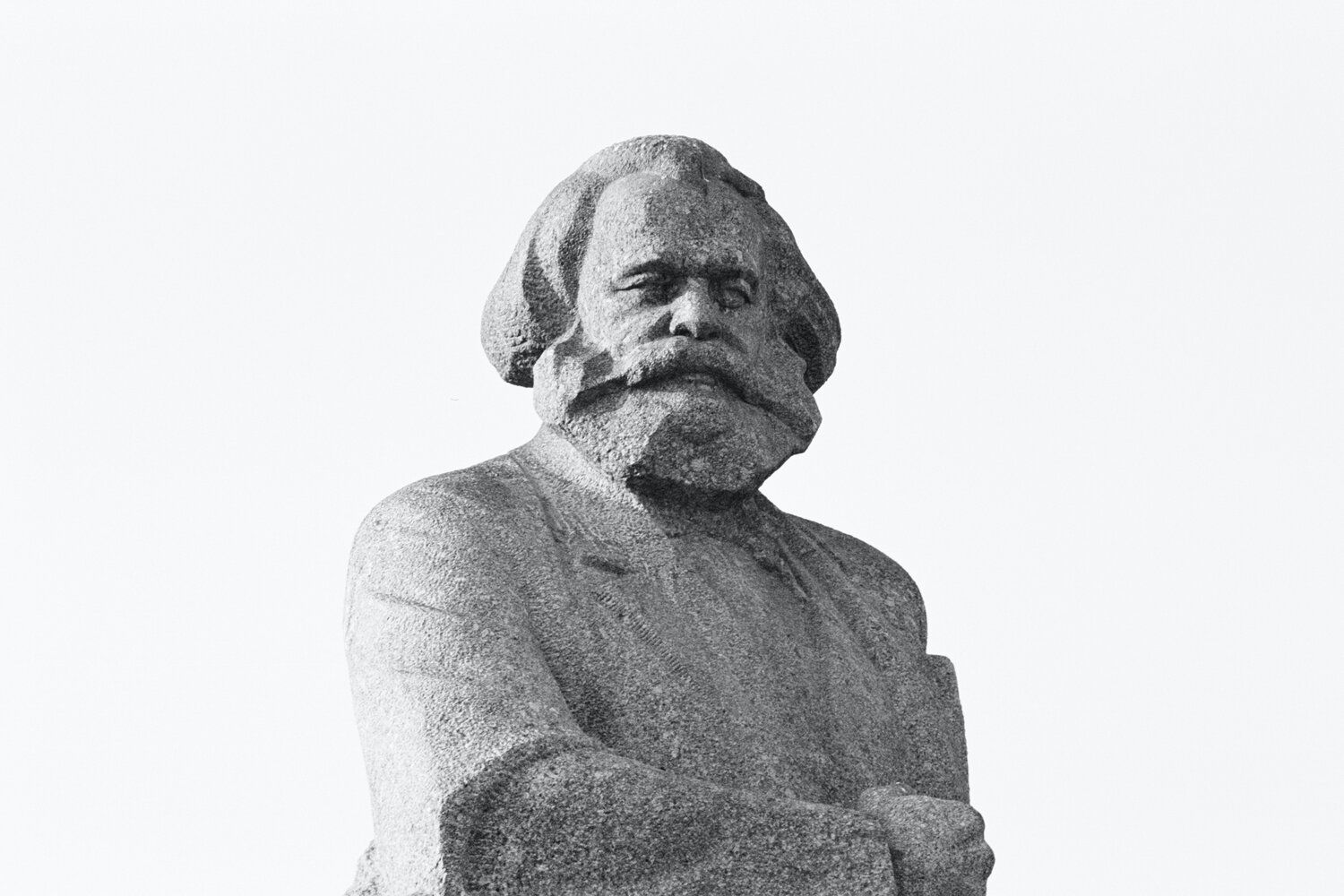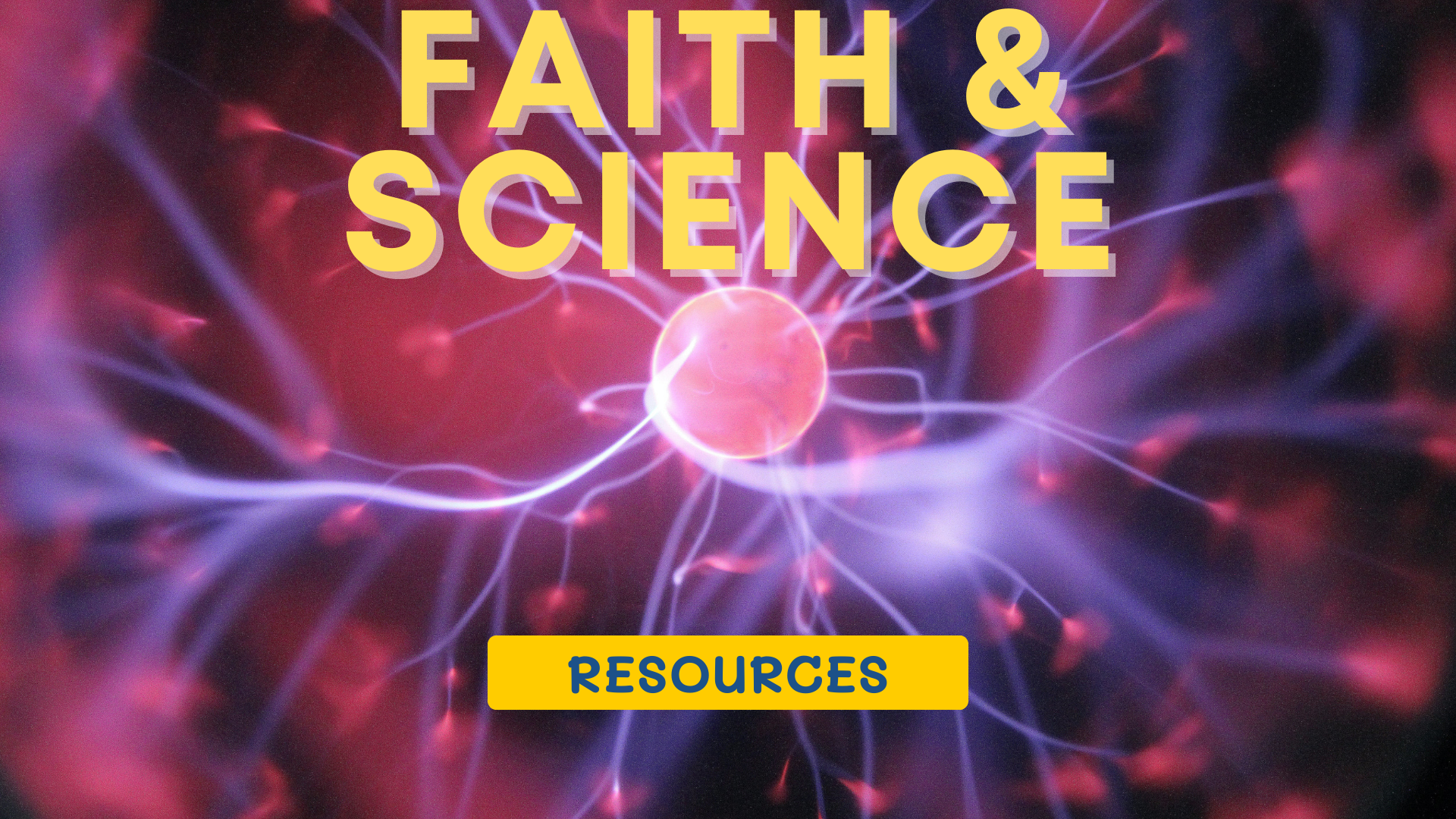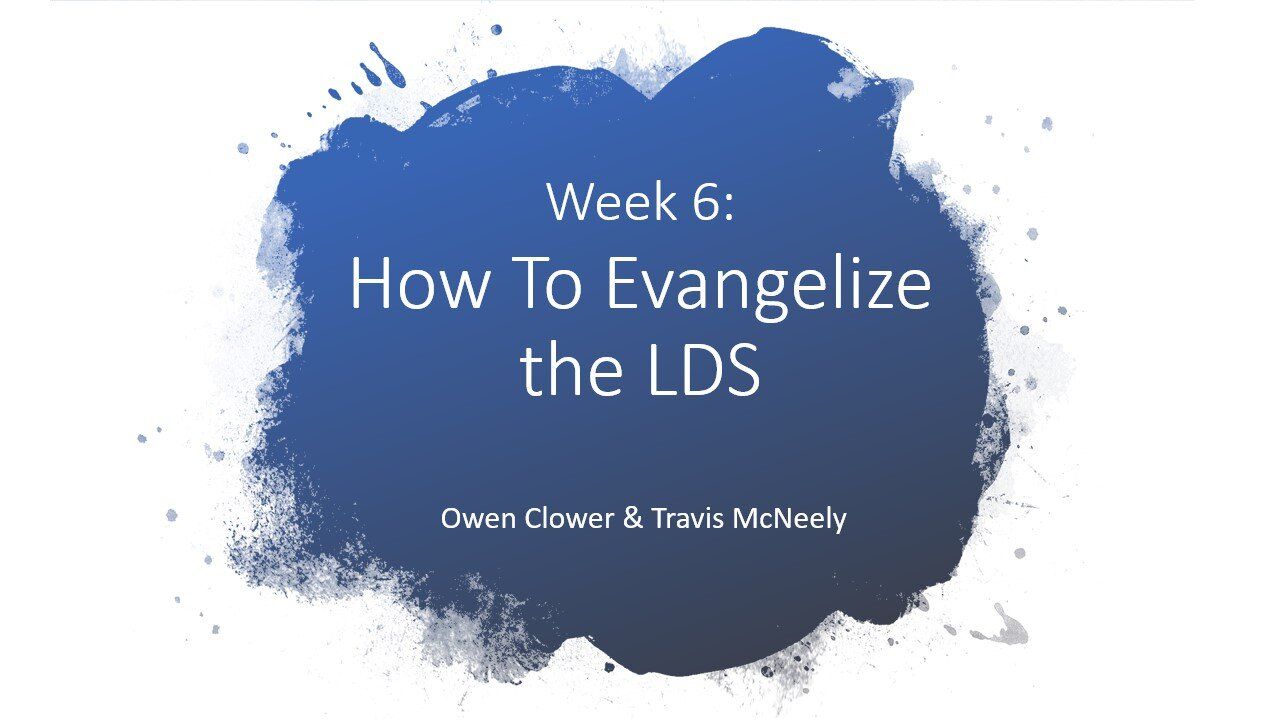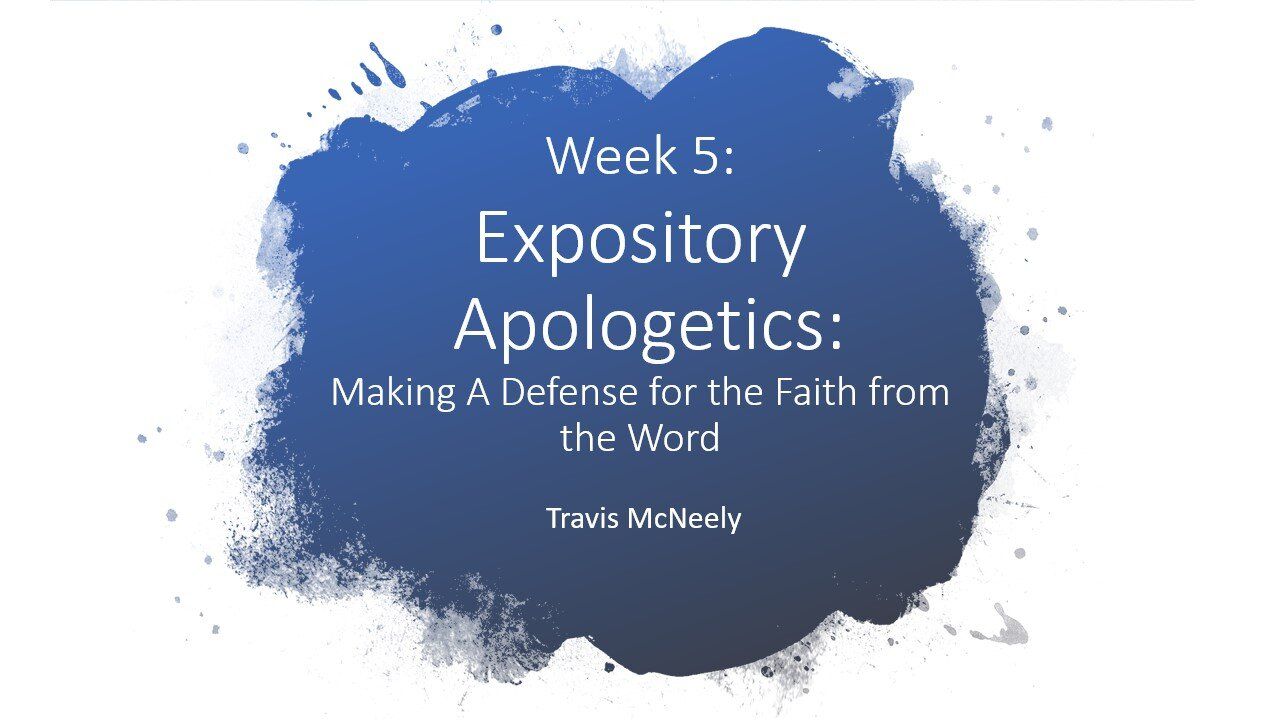Is Critical Race Theory Rooted in Marxism? Analyzing Primary Sources

The past couple of days, I've noticed arguments being made that suggest Critical Race Theory(CRT) is not rooted in Marxist or specifically Neo-Marxist ideology. This has peaked the interest of many, so I thought I'd ask someone who was much more educated than I as it relates to this subject.
I approached someone who lived his life as a Neo-Marxist & Critical Theorist and who read all their works assiduously--Professor of Law Randy Trahan of LSU.
Professor Trahan & I even worked on a series to address the recent interest among evangelicals concerning CRT.
When I shared with him the thread by Lisa Sharon Harper , he wasn't surprised by her approach, because this is the claim many seek to make to separate CRT from its Marxist roots. The truth is CRT cannot survive without its roots in Neo-Marxism.
Let me share with you some insights directly from multiple sources to help shed light on this fallacious claim by her and many others.
https://twitter.com/lisasharper/status/1335692490490441732?s=20
I would like to argue that I believe Mrs. Harper is rather the one in ignorance here, if it isn't ignorance she speaks from then it is clearly deception. I'll let the evidence speak for itself below.
Critical Race Theory, Critical Legal Theory, & Its Marxist Roots
Sources are cited to see for yourself followed by quotes. Important mentions in connection to Marxism are in Italics.
Atiba R. Ellis, Citizens United and Tiered Personhood, 44 JOHN MARSHALL L. REV. 717, 722 n. 23 (2011) “CRT is a specific offshoot of CLS which sought to develop methodologies to examine and confront entrenched racism in American society.”
Adrien Katherine Wing, A Critical Race Feminist Conceptualization of Violence: South African and Palestinian Women, 60 ALB. L. REV. 946-47 (1997) “Critical race feminism (CRF) is the latest offshoot in the jurisprudential framework that began with critical legal studies (CLS), and
includes feminism and critical race theory (CRT). The CLS theorists have been a group of predominantly progressive or radical white male academics that have critiqued traditional positivist or realist legal jurisprudence. These CLS theorists embrace several premises, including postmodern critiques of the inviolability of laws and hierarchy in Western society. Additionally, one primary method of their analysis is deconstruction which involves the critique of allegedly neutral concepts to expose the actuality of the socially constructed contingent power
relationships. Many progressive scholars, including white women and people of color, were attracted to CLS because it exposed various aspects of the nature of domination through law within American society. Yet their analysis was incomplete as there was a lack of attention to the
sexual and racial aspects of legal domination. CRT embraces the CLS deconstruction methodology to challenge racial orthodoxy. CRT draws from intellectual traditions such as liberalism, law and society, Marxism, postmodernism, pragmatism and cultural nationalism.”
William Bradford, “With a Very Great Blame on Our Hearts”: Reparations, Reconciliation, and an American Indian Plea for Peace with Justice, 27 Am. Ind. L. Rev. 1, 95, n. 456 “Critical Race Theory (CRT) is an offshoot of the Critical Legal Studies (CLS) movement, which
suggests that, because the liberal law is manipulable in legitimation of existing maldistributions of wealth and power, it is necessary to “begi[n] all over again the fight over the terms of social life” by listening to the voices of socially disadvantaged groups.
Roberto M. Unger, The Critical Legal Studies Movement, 96 HARV. L. REV. 561, 583 (1983) ; . . . . By deconstructing social hierarchy, CLS jurisprudence aims to transform the liberal order away from individualism and towards justice for disenfranchised groups. . . . CRT extends the CLS critique in asserting that liberal legal reasoning systematically subordinates racial minority groups because racism, the single most pervasive and immutable social variable, creates a zero-sum conflict between powerful whites and powerless minorities that cannot be mitigated by commonalities or socialization.”
Ana Sljivic, Why Do You Think It's Yours? An Exposition of the Jurisprudence Underlying the Debate Between Cultural Nationalism and Cultural Internationalism, 31 Geo. Wash. J. Int’l L. & Econ. 393, 398 & 433 (1997-1998) This article examines “two theories of international law
that are purposeful to the debate, the New Stream and Critical Race Theory--both of which are offshoots of Critical Legal Studies.”*** Critical Race Theory is also an offshoot of Critical Legal Studies.”
Pamela D. Bridgewater, Legal Stories and the Promise of Problematizing Reproductive Rights, 21 LAW & LITERATURE 402, 403 “Fortunately there have been attempts to challenge the disaggregation of law and narrative. These interruptions of the status quo appear largely within critical legal studies and its offshoots such as critical queer theory, critical race theory, and critical feminist theory.”
Larry Kata Backer, Defining, Measuring, and Judging Scholarly Productivity: Working Toward a Rigorous and Flexible Approach, 52 J. LEG. EDUC. 317, 326 (2002) “Still fresh in many minds are the great debates in the 1980s and early 1990s revolving around whether one could attach the label “scholarship” to products that looked like scholarship (a writing appearing in a publication), and might even appear to be of high quality, if only because of publication in elite journals, but which could be unworthy of the label “scholarship” because these products were classified as critical legal studies and its offshoots—critical race theory, LatCrit theory, queer theory, critical or “radical” feminist theory, and law and literature, to name a few.”
Maxwell O. Chibundu, Structure and Structuralism in the Interpretation of Statutes, 62 U. CIN. L. REV. 1439 1445, n. 27 (1994) “These approaches include, notably, the “critical legal studies”movement and offshoots such as the “critical race theory” and “feminist critical theory” groups. See generally Mark Tushnet, Critical Legal Studies: A Political History, 100 YALE L.J. 1515 (1991).”
Judge Alex Kozinski, Who Gives a Hoot About Legal Scholarship, 37 HOUS. L. REV. 295, 317 (2000) “Not all grand ideas take hold, of course. Critical legal studies, and its offshoots--critical race theory, critical feminism, and the like- -have had much tougher sledding and the jury is still
out, so to speak, as to whether they will be accepted. My guess is that they will not, but perhaps that is because these ideas have not managed to persuade a majority of academics.”
Robert S. Chang & Natasha Fuller, LatCrit IV Symposium: Rotating Centers, Expanding Frontiers: Latcrit Theory and Marginal Intersections: Performing LatCrit: Introduction, 33 U.C. DAVIS L. REV. 1277, 1290 n. 64 “According to one originary myth, critical race theory, although it
had historical antecedents, began in the late 1980s as a racial intervention in critical legal studies and as a leftist intervention in liberal race discourse. See Kimberle Crenshaw, Remarks at Opening Plenary, Conference on Critical Race Theory, Yale Law School (Nov. 14, 1997)
(transcript on file with author); see also Introduction to CRITICAL RACE THEORY: THE KEY WRITINGS THAT FORMED THE MOVEMENT xiii (Kimberle Crenshaw et al. eds., 1995). By describing it as an originary myth, we are not disputing the veracity of the account; instead,
we do so to acknowledge the mythic quality that stories of origin have, remembering that the original Greek mythos meant a true story.”)
Kirstin T. Eidenbach, Critical Legal Studies and the Lawless Frontier, 1 THE CRIT: CRITICAL STUD. J. 96, 96 n. 1 “Critical studies is used in this article to refer not only to the original critical legal studies movement but also to its progeny - critical race theory, critical feminism, critical gay
theory, critical geography and so on. I also use the terms critical legal studies and critical studies fairly interchangeably. Although the movement of critical legal studies is in many ways a discrete approach, it is also widely used to refer to all of the critical movements.”
Mark Tushnet, Critical Legal Studies: A Political History, 100 YALE L.J. 1515, 1517-18 (1991 ) “At present one might describe the political location of critical legal studies as occupied by certain feminists (“fem-crits”), certain theorists concerned with the role of race in law (critical
race theorists), a group influenced by recent developments in literary theory (postmodernists), a group of cultural radicals, and a group that stresses the role of the economic structure in setting the conditions for legal decisions (political economists).”
Richard Delgado, Rodrigo's Fifteenth Chronicle: Racial Mixture, Latino-Critical Scholarship, and the Black-white Binary, 75 TEX. L. REV. 1181, 1183 “‘I've been reading about them,’ I said.‘They seem to be a spinoff group from Critical Race Theory (CRT), which in turn traces its origins to earlier progressive movements, including CLS. . . .’”
Randall Kennedy, Racial Critiques of Legal Academia, 102 HARV. L. REV. 1745 (1989) “Derrick Bell is the most widely-known black legal academic in the country and the most prominent contributor to the racial critique literature. Yet his own work articulates positions and attitudes
for which white CLS scholars are criticized. No scholar in the CLS movement has expressed more disdain than Bell towards the efficacy of rights rhetoric, more skepticism about the supposed benefits of legal reforms, or more pessimism regarding the capacity of racial minorities to affect decisively the environment in which they live. White CLS scholars have lauded Bell's work and it is wholly appropriate that his writings are included in a bibliography of CLS literature. The leading CLS article on race-relations law—Alan Freeman's Legitimizing Racial Discrimination Through Antidiscrimination Law: A Critical Review of Supreme Court Doctrine—is fully consistent with Bell's writings. Yet Bell's work receives none of the criticism aimed at CLS work, even though it displays several of the same features for which white CLS scholars are chided.”
Gregory Scott Parks, Toward a Critical Race Realism, 17 CORNELL J.L. & PUB. POL'Y 683, 705-06 (2008) “Furthermore, Bell was a Crit--a Critical Legal Studies adherent--in that ‘he understood the indeterminate and frequently contradictory character of the law.’ * * * Critical Legal Studies had a more direct impact as well. Generally, the cleavage of Critical Race Theory from Critical Legal Studies may have been, as described by Richard Delgado, an inevitable result of the different worldviews of whites and people of color. For example, many whites do not readily
perceive racism. People of color, on the other hand, see and are on the receiving end of racism daily. This has two effects: First, ‘even the most sympathetic, left-leaning whites’ have to constantly be re-educated about racism. Second, it colors each group's ‘legal and political
theorizing,’ causing members of the respective groups to take different stances on issues. As such, whites and people of color within the Critical Legal Studies movement had fundamental differences in what they wanted in a legal theory. * * * Finally, at the 1987 CLS conference, attendees hosted a panel entitled ‘The Minority Critique of CLS Scholarship (and Silence) on Race.’ The panelists focused their comments on the ‘racially specific culture of CLS, the critique of rights, and on the silencing of voice[s] of color in the legal academy.’ In 1988, Kimberlé Crenshaw, Stephanie Phillips, and Richard Delgado began discussions on how to convene individuals interested in the intersection of CLS and race. At the time, Crenshaw was a visiting fellow, Phillips was a Hastie Fellow, and Delgado was a professor. Together, they approached David Trubek, director of the Wisconsin's Institute of Legal Studies, for funds to support a workshop initially called “New Developments in Race and Legal Theory” but ultimately changed to “Critical Race Theory.”
Arlene S. Kanter, The Law: What's Disability Studies Got to Do with it or an Introduction to Disability Legal Studies, 42 COLUM. HUM. RTS. L. REV. 403, 443, n. 133 (2011) “For examples of the application of critical legal studies to racial justice and equality issues, see generally: Derrick
Bell, And We Are Not Saved: The Elusive Quest for Racial Justice (1989) . . . .”
Robert J. Pushaw, Jr., Does Congress Have the Constitutional Power to Prohibit Partial-Birth Abortion?, 42 HARV. J. ON LEGIS. 319, 339 n. 127 “[T]he Court has virtually ignored CLS. A WESTLAW search on April 19, 2005, revealed no mention of Derrick Bell or Richard Delgado, two prominent figures in this field.”
John Bennett, The Totalitarian Ideological Origins of Hate Speech Regulation, 46 CAP. U. L. REV. 23, 24-25 (2018) “[D]espite the fall of Communist regimes, certain Marxist ideals and resentments persisted among many American intellectuals. With those persisting Marxist ideals
and resentments follow the disturbing institutional responses characteristic of the underlying ideals--namely, state censorship. As a result of the “long march through the institutions,” Marxism has substantial influence within critical theory, cultural studies, and critical race theory, which are prominent within the humanities, social sciences, and legal scholarship. . . .Communism's ideological influence descended from the mid-twentieth-century communist regimes, to the Marxist “critical theory” of the Frankfurt School, to various modern offshoots of Marxist critical theory, through to the rigidly institutionalized leftist doctrines in today's academy, such as critical race theory.”
Linda S. Greene, From Tokenism to Emancipatory Politics: the Conferences and Meetings of Law Professors of Color, 5 Mich. J. Race & L. 161, 171 n. 34 (1999) “The special contributions of scholars working on critical race theory arise from a unique blend of diverse scholarly traditions, i.e. civil rights; social political and discursive theory; feminist theory; post-modern literary criticism; Marxism and critical legal studies.”
Douglas E. Litowitz, Some Critical Thoughts on Critical Race Theory, 72 NOTRE DAME L. REV. 503, 503 (1997) “Critical Race Theory (CRT) is perhaps the fastest growing and most controversial movement in recent legal scholarship, stirring up debate in much the same manner Critical Legal Studies (CLS) did fifteen or twenty years ago. Although CRT was inspired in part by the failure of CLS to focus sufficiently on racial issues, it remains indebted in style and substance to CLS; it also draws from such diverse sources as Continental philosophy (especially postmodernism and poststructuralism), radical feminism, Marxism, cultural studies, and the black power movement.”
On a related, but different topic – CRT & (neo-) Marxism:
David G. Garcia, Remembering Chavez Ravine: Culture Clash and Critical Race Theater, 26 CHICANA/O-LATINA/O L. REV. 111, 115 (2006) “[I]n its critique of class-based inequality in the U.S., CRT scholars look to the strengths of Marxism and neo-Marxism, while also learning from
Marxism and Neo-Marxism's insufficient analysis concerning the links between class, race, and gender. Moreover, Latina/o critical race (“LatCrit”) theorists extend critical race discussions to address the layers of racialized subordination such as language, immigration status, culture, and
sexuality that comprise Chicana/o, Latina/o experiences.”
Thomas C. Grey, Freestanding Legal Pragmatism, 18 CARDOZO L. REV. 21, 26 n. 15 (1996) “ The recent Critical schools of jurisprudence, including Critical Legal Studies, Feminist Jurisprudence, and Critical Race Theory have taken theoretical inspiration from a variety of
sources, including Frankfurt School neo-Marxism, Foucauldian genealogical critique, deconstruction, American Legal Realism and its closely related American radical debunking tradition (Veblen, Galbraith), feminist theory, “anti-colonial” cultural studies (Bourdieu), and
race-based radical theory (DuBois, Fanon).”
Nicholas F. Stump, Following New Lights: Critical Legal Research Strategies as a Spark for Law Reform in Appalachia, 23 AM. U. J. GENDER SOC. POL'Y & L. 573, 600 (2014) “As opposed to a discrete framework, contemporary critical legal theory perhaps is best defined as a diverse and
inclusive canon of “literature or ideas,” including such schools as feminist legal theory, critical race theory, critical race feminism, LatCrit, queer legal theory, disability theory, law and socioeconomics, and critical examinations of environmental law--the theoretical underpinnings
of which were influenced by such foundational movements as legal realism, neo-Marxism, post-structuralism, and deconstruction.”
Edward L. Rubin, Jews, Truth, and Critical Race Theory, 93 NW. U. L. REV. 525, 536-37 (1999) “Horkheimer and Adorno's critique of reason, objective truth, and the Enlightenment is thus not based on moral relativism, or even a strong claim of epistemological indeterminacy, but rather on deeply felt norms about the value of the individual and the evils of oppression. These norms, of course, are Marxist in origin, and the entire analysis exists within the framework of the Marxist tradition. Critical legal studies attempted to apply Marxist analysis to American law and
achieved some important insights. The movement ran aground, however, from its inability to forge any connection with current political reality. The class conflict model on which it is based possessed little salience for Americans and its radical prescriptions appealed only to academics, who are an unpromising revolutionary group, their enthusiasm notwithstanding. Critical race theory, as Farber and Sherry note, is a successor to critical legal studies. However, by translating the traditional class analysis of Marxism into an analysis of racial stratification, it achieved the relevance to American political reality that critical legal studies lacked. Unlike class conflict, race is an explicitly motivating theme in politics. A similar point can be made for radical feminism and gay legal studies. All three movements speak to issues at the forefront of political debate and appeal to active political figures who can readily draw ideas and support from academic prescriptions.”
Anthony Paul Farley, When the Stars Begin to Fall: Introduction to Critical Race Theory & Marxism, 1 COLUM. J. RACE & L. 226, 232 (2012) “Critical Race Theory is a modernist project. Marxist and Freudian influences abound. Critical Race Theorists, Marx and Freud in tow, read
law with a purpose, not as ‘signifying nothing.’ With Marx, there are no accidents. With Freud, there are no accidents. With Critical Race Theorists, there are no accidents. There are no accidents. There are no accidents because slavery is fatal. Slavery was fatal. There has already
been an accident. There were no survivors. There are, therefore, no more accidents to be had. This thing of darkness cannot be illuminated. It is in that sense that there are no accidents. Marx was known to his family, affectionately, as ‘the Moor.’ Freud, too, was known to his family as ‘a little Moor.’ Let us regard the blackness of Marx and Freud as no accident. Let us go on and regard these two blackamoors as comrades and racemen.”
Robert S. Chang & Adrienne D. Davis, The Adventure(s) of Blackness in Western Culture: an Epistolary Exchange on Old and New Identity Wars, 39 U.C. DAVIS L. REV. 1189, “I suspect that by Critical Race Feminism we mean something more. Genealogical references here might be significant and suggestive. Critical Race Feminism is a methodology that incorporates not only the tenets of other racialized feminisms, but also the central tenets of Critical Race Theory, including the latter's commitments to Marxist and poststructuralist insights.”
Richard A. Jones, Philosophical Methodologies of Critical Race Theory, 1 GEO. J. L. & MOD. CRITICAL RACE PERSP. 17, 30 (2009) “[M]ateriality is the deconstructive methodology for analyzing dominance/subordination, as it is always based on an expropriation of power. Feminist philosopher Sandra Bartky writes, ‘When workers lose control of the products of their labor or of their own productive activity, they have undergone fragmentation within their own persons, a kind of inner impoverishment; parts of their being have fallen under the control of another.’ This Marxian alienation of self through material expropriation, by way of dominant/subordinant relationships, is a widely deployed CRT methodology.”
Tam B. Tran, Title VII Hostile Work Environment: a Different Perspective, 9 J. CONTEMP. LEGAL ISSUES 357, 370 (1998) “In addition to the deconstruction methodology, CRT also drew from other areas of thought including law and society, Marxism, pragmatism, postmodernism, and
cultural nationalism.”
Adrien K. Wing & Christine A. Willis, Critical Race Feminism: Black Women and Gangs, 1 J. GENDER RACE & JUST. 141, “CRT is wary of the dominant legal theories which support hierarchy, neutrality, color blindness, and single axis analysis; and draws from a broad array of intellectual
traditions such as liberalism, Marxism, postmodernism, pragmatism, and cultural nationalism.”
Kimberlé Crenshaw, A Black Feminist Critique of Antidiscrimination Law and Politics, in THE POLITICS OF LAW: A PROGRESSIVE CRITIQUE 195, 213-14 n.7 (David Kairys ed., 1990) “Critical race theory draws upon several traditions, including poststructuralism, postmodernism, Marxism, feminism, literary criticism, liberalism, and neopragmatism … and radical pluralism …. Critical race theory goes beyond liberal understandings of race and racism by exploring those of its manifestations that support patriarchy, heterosexism, and class stratification. The normative stance of critical race theory is that massive social transformation is a necessary precondition of racial justice.”
Richard Delgado & Jean Stefanic, CRITICAL RACE THEORY: AN INTRODUCTION 5 (3 rd ed. 2017) “[C]ritical race theory builds on the insights of two previous movements, critical legal studies and radical feminism, to both of which it owes a large debt . It also draws from certain European
philosophers such as Antonia Gramsci, Michel Foucault, and Jacques Derrida, as well as from the American radical tradition exemplified by such figures as Sojourner Truth, Frederick Douglass, W.E.B. Dubois, Cesar Chavez, Martin Luther King, Jr., and the Black Power and Chicano movements of the sixties and early seventies. From critical legal studies, the group borrowed the idea of legal indeterminacy–the idea that no every legal case has one correct outcome. The group also incorporated skepticism of triumphalist history and the insight that favorable precedent, like Brown v. Board of Education, tends to erode over time, cut back by narrow lower-court interpretation, administrative foot-dragging, and delay.”
“We discovered ourselves to be critical theorists who did race and racial justice advocates who did critical theory.” —Kimberlé Crenshaw
"Critical theory takes as its starting-point the work of Marx and Freud..." —David Macey, Penguin Dictionary of Critical Theory (2000), 75.
The opinions expressed herein are solely those of Professor Trahan. They do not necessarily represent the opinions of the Paul M. Hebert Law Center, Louisiana State University, or any other organization with which Professor Trahan is affiliated.
Want To Book Me for Your Event or Conference?
Fill out the form below and we'll be in touch!
Book Travis McNeely
We will get back to you as soon as possible
Please try again later
More posts like this...




